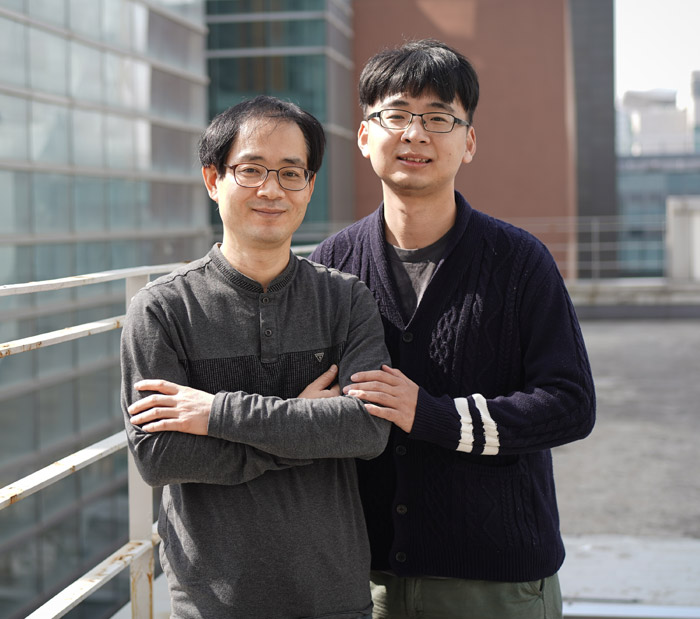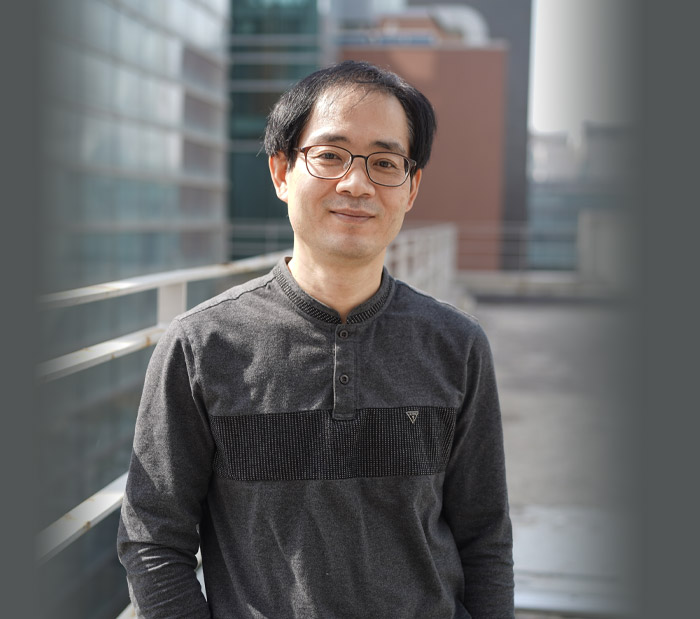Research Stories
Development of New Treatment for PDT for Hypoxic Cancer, Suggestion of New Theranostic Method for PDT
Chemistry
Prof.
LEE, JINYONG
[Development of a New Treatment for Photodynamic Theraphy (PDT) for Hypoxic Cancer]
A research collaboration team led by Prof. Jin Yong Lee (co-first author: Hao Li, Dept. of Chemistry) and Prof. Jong Seung Kim at Korea University (co-first authors: Dr. Miae Won and Dr. Seyoung Koo) announced that they have developed a new treatment for photodynamic therapy for hypoxic cancer through joint research. Since photodynamic therapy requires reactive oxygen, it has limitations in its application to hypoxic cancer. The research team proposed a new method for photodynamic therapy for hypoxic cancer by simultaneously causing reactive oxygen generation and inhibition of GST-pi.
The joint research team of Sungkyunkwan University and Korea University combines BPS, an existing photosensitizer, with EA to generate reactive oxygen and inhibits GST-pi, an enzyme that interferes with photodynamic therapy by free radicals, to improve the efficiency of photodynamic therapy for hypoxic cancer.
Currently, photodynamic therapy is clinically approved, but reactive oxygen must be present for the treatment. Therefore, there is a limit to application to hypoxic cancer that lacks oxygen around cancer cells. In order to overcome this, various attempts have been made to transport oxygen and to generate oxygen, but there were difficulties due to side reactions from excessive production of active oxygen.
To solve these difficulties, the joint research team improved the performance of photodynamic chemotherapy for hypoxic cancer by covalently binding EA to BPS, an existing photosensitizer. EA-BPS serves to scavenge glutathione (GSH) by delivering EA and reduce the activity of the GST-pi enzyme. In particular, through experiments, it was confirmed that EA-BPS lowered the activity of GST-pi by promoting lysosome decomposition and lipid peroxidation.
In addition, docking and molecular dynamics (MD) simulations were performed to reveal that five residues (chain A: F7, W37 and Y107; chain B: Y107 and A120) play an important role in the active site, and it was revealed that EA-BPS was interacting with GST-pi enzyme pocket through two subunits instead of one subunit.
Professors Lee and Kim said, "The EA-BPS developed in this study has proven its excellent therapeutic effect in a xenograft tumor mouse model, and based on this, we are looking for ways that can be applied to the clinic. It is expected to present a new path for the development of photodynamic therapy for hypoxic cancer."
The results of this study was published in the journal "Angewandte Chemie International Edition (ACIE; IF=12.959)" (Feb 8, 2021).
[ Suggestion of a New Method that Could be Used in an Easy and Convertable Theranostic for Photodynamic Theraphy]
A research collaboration team led by Prof. Jin Yong Lee (co-first author: Hao Li, Dept. of Chemistry) and Prof. Juyoung Yoon at Ewha Womans University (co-first authors: Dr. Hong-Bo Cheng and Dr. Bin Qiao) announced that they have developed a new reversible photodynamic chemotherapy method through joint research. It is very difficult and challenging to develop photosensitizers that can reversibly control free radicals for photodynamic therapy.
The research team used porphyrin and DIA as building blocks to create HSA-DIA-porphyrin nanoparticles through self-assembly with HSA, which suggested a new method that could be used in an easy and convertible theranostic for photodynamic immunotherapy.
The development of activatable photosensitizers to allow for the reversible control of singlet oxygen (1O2) production for photodynamic therapy (PDT) faces great challenges. Fortunately, the flourishing field of supramolecular biotechnology provides more effective strategies for activatable PDT systems.
The joint research tream developed a new reversible PDT on a switch that controls the 1O2 generation of self-assembled albumin nanotheranostics in vitro and in vivo. A new molecular design principle of aggregation-induced self-quenching photochromism and albumin on-photoswitching was demonstrated using a new asymmetric, synthetic diarylethene moiety DIA.
The photosensitizer porphyrin and DIA were incorporated as building blocks in a glutaraldehyde-induced covalent albumin cross-linking nanoplatform, HSA−DIA−porphyrin nanoparticles (NPs). More importantly, the excellent photoswitching property of DIA enables the resultant nanoplatform to act as a facile, switchable strategy for photodynamic-immunotherapy. In addition, through docking and molecular dynamics (MD) simulations, three binding modes (heme binding site, cracked binding site, and other binding sites bound to the FA7 region) were identified, and HSA (Human Serum Albumin) preferred antiparallel fashion in binding to DIA rather than parallel.
Prof. Lee and Prof. Yoon said, "The synthesis of a non-invasive trigger that reversibly regulates the production of free radicals is a very important in the development of photodynamic chemotherapy drugs, and this study presents a new avenue."
The results of this study was published in "Journal of the American Chemical Society (JACS; IF=14.612)". (Feb 10, 2021)


